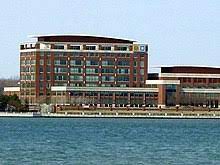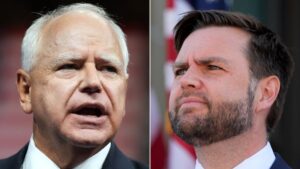U.A.W. Expands Strikes at G.M. and Stellantis while Reporting Progress in Ford Negotiations

In a bold move, the United Automobile Workers (U.A.W.) union has intensified the pressure on both General Motors (G.M.) and Stellantis, the parent company of Jeep and Ram. Their strike against these automotive giants has now encompassed all the spare parts distribution centers affiliated with these companies.
Expanding the Strike to Distribution Centers
By extending the strike to include the distribution centers, which are crucial for supplying parts to dealerships for vehicle repairs, the U.A.W. is taking its case directly to consumers. This action could potentially inconvenience car and truck owners who may struggle to have their vehicles fixed promptly. While this strategy might coerce automakers into offering more favorable terms to the union, it also carries the risk of alienating frustrated car owners, turning them against the U.A.W.
Shawn Fain, the President of the U.A.W., announced that workers at 38 distribution centers affiliated with G.M. and Stellantis would be participating in the strike. He emphasized that negotiations with these two companies had not made substantial progress, in stark contrast to the more accommodating stance taken by Ford Motor.
“We will continue to shut down parts distribution centers until these two companies come to their senses and engage in meaningful negotiations,” stated Mr. Fain.
The affected distribution centers comprise 18 under G.M., employing a total of 3,475 workers, and 20 under Stellantis, housing 2,150 U.A.W. members. This latest move brings the tally of striking U.A.W. workers to over 18,000.
Automaker Responses
G.M. expressed its disapproval of the strike escalation, stating, “Today’s strike escalation by the U.A.W.’s top leadership is unnecessary.” The company asserted that it had contingency plans in place for various scenarios to safeguard its business, customers, and dealers.
Stellantis responded by suggesting that the union leadership seemed “more concerned about pursuing their own political agendas than negotiating in the best interests of our employees.” They highlighted an offer that included a 21.4 percent compounded raise for full-time employees.
Notably, the U.A.W. refrained from striking additional facilities at Ford, citing progress made during negotiations with the company. President Fain acknowledged, “To be clear, we are not done at Ford. We have serious issues to work through, but we do want to recognize that Ford is serious about reaching a deal.”
Ford, in its statement, affirmed its commitment to reaching an agreement but acknowledged significant gaps in various economic issues. They emphasized the interconnected nature of these issues, highlighting the need for an overall agreement that supports mutual success.
Political Invitation
In a live broadcast on Facebook, Mr. Fain extended an invitation to President Biden to join the striking workers on the picket line. President Biden had previously expressed strong support for U.A.W. members, but the union has, at times, expressed reservations about the president’s stance on electric vehicles and has refrained from endorsing a candidate for the 2024 presidential race, a departure from its usual practice of endorsing Democratic candidates.
Impact on Vehicle Repairs
The shutdown of parts distribution centers is expected to hinder dealers’ ability to carry out vehicle repairs and maintenance. According to Arthur Wheaton, the director of labor studies at Cornell’s School of Industrial and Labor Relations, the days of dealers maintaining parts inventories are long gone. This means that if dealers require parts, they may face difficulties in obtaining them. While G.M. and Stellantis may continue manufacturing vehicles, dealers and customers are likely to be left dissatisfied.
Auto mechanics have noted that the supply of spare parts, which was already significantly disrupted during the pandemic, is likely to face further strain. For instance, Alan Heriford, owner of JoCo Auto Repair in Merriam, Kan., revealed that he had been informed of a six-to-eight-month delay in receiving a module for a G.M. truck. Typically priced at $500, used and salvaged units are now commanding prices of around $3,000.
Union Strategy and Reactions
The U.A.W.’s decision to target only G.M. and Stellantis-owned distribution centers appears to reward Ford for its willingness to align more closely with the union’s demands. Ford has agreed to adjust worker pay to account for inflation, increase profit-sharing bonuses, allow the right to strike over plant closures, and transition all current temporary workers to full-time positions.
Prof. Wheaton observed that the union is employing a “carrot and stick” approach, with Ford being seen as making more favorable efforts from the union’s perspective.
Tensions between the union and the automakers were already high and were exacerbated before the strike’s expansion. Leaked private messages from a union communications manager, posted on the social media platform X (formerly Twitter), seemed to indicate that union leaders were content with the strike’s adverse impact on the manufacturers.
Both G.M. and Stellantis expressed strong disapproval of these leaked messages, accusing the union leadership of callously disregarding the consequences of the strike and causing disruption over an extended period.
Escalating Stakes
The expansion of the strike raises the stakes for both sides and may compel other plants belonging to the automakers and their suppliers to cease production. All three companies have reported production suspensions and layoffs for workers uninvolved in the strikes initiated by the U.A.W. last week, primarily due to the disruptions caused by those strikes.
The U.A.W. is providing striking workers with $500 per week from its $825 million strike fund, while the manufacturers face significant daily revenue losses as long as the affected plants remain inactive.
An economic report by the Anderson Economic Group estimated that the economic cost of the strike’s first week amounted to $1.6 billion, including over $500 million in corporate losses and more than $100 million in lost wages, not accounting for strike pay.
One week prior, the union called for strikes at a G.M. pickup truck plant in Wentzville, Mo., a Ford factory in Michigan producing the Bronco sport-utility vehicle, and a Stellantis-owned Jeep plant in Toledo, Ohio.
The U.A.W.’s demands include a substantial wage increase, highlighting the automakers’ robust profits over the past decade and the increased pay of their top executives. The union initially demanded a 40 percent wage increase, while the companies have offered approximately 20 percent over four years.
Furthermore, the U.A.W. seeks expanded pension eligibility, company-paid retiree health care, shorter working hours, and job security in the event of future plant closures. They also aim to abolish a wage system where new hires start at around $17 per hour and must wait eight years to reach the top wage of $32 per hour.
Peter Berg, a professor of employment relations at Michigan State University, observed that the U.A.W.’s strategy of limiting strikes to specific locations reduces the cost of supporting striking workers from its strike fund. However, this strategy poses challenges for the manufacturers, as these plants produce some of their most profitable vehicles.
As the strike continues, questions remain about whether the union can sustain its solidarity and keep all members united in the coming weeks. This situation represents a shift in power towards workers and has the potential to reshape labor dynamics in the automotive industry.
Earlier in the week, workers gathered at Stellantis’s North American headquarters in Auburn Hills, Mich., expressed their readiness to join the strike if called upon to do so





